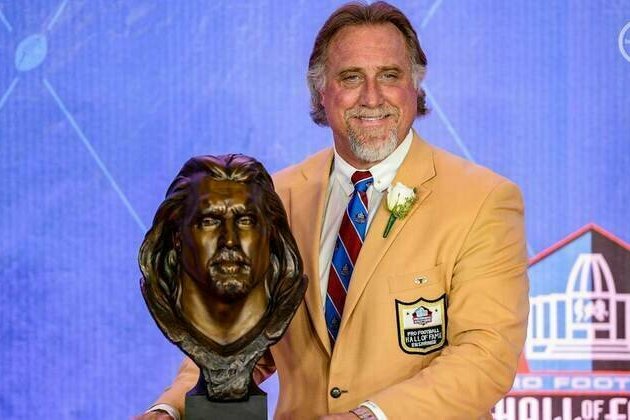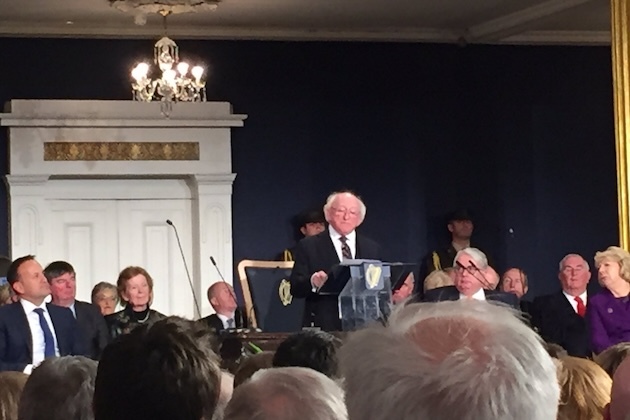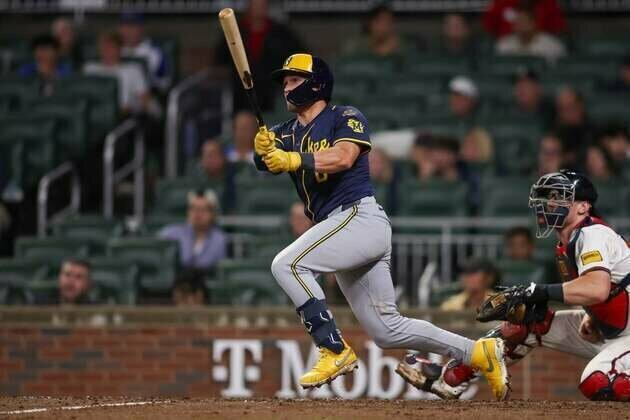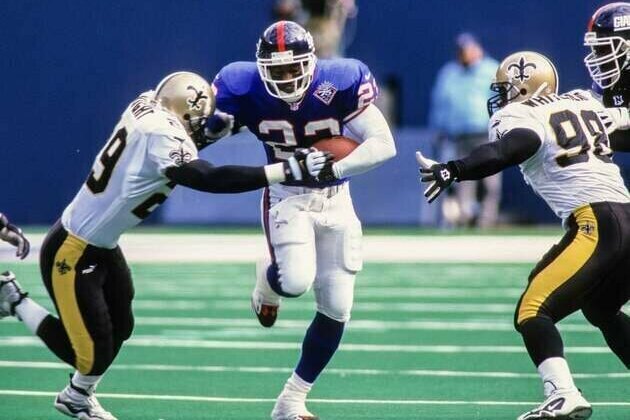Steelers in HOF: Worth the wait for Greene
The Steelers
06 Aug 2025, 14:30 GMT+10

Teresa Varley
The Steelers have a rich history, with players, coaches and ownership earning their rightful spot in the Pro Football Hall of Fame for the contributions they made on and off the field.
Many of the Pro Football Hall of Fame enshrinements took place during July, August and September, and we are taking a look back at the day in history that each member of the Steelers organization took their rightful place in football immortality.
Today, we take a look at Kevin Greene, who were enshrined in the Pro Football Hall of Fame on this day.
August 6
Kevin Greene
Linebacker (1985 - 1992, Rams; 1993 - 1995, Steelers; 1996 & 1998 - 1999, Panthers; 1997, 49ers)
Enshrined in the Pro Football Hall of Fame: August 6, 2016
They say good things come to those who wait, and for Kevin Greene that proved true.
The late Steelers linebacker had to wait for 12 years after his retirement to be inducted into the Pro Football Hall of Fame. Greene was enshrined as a member of the Class of 2016.
Greene was originally drafted by the Los Angeles Rams in the fifth-round in 1985, where he established himself as an elite pass rushing outside linebacker with the Rams, collecting 72 sacks in eight seasons. But the last two years the focus of the Rams defense shifted and for Greene the beginning of NFL free agency in 1993 came at a perfect time.
The Steelers were in the market for an outside linebacker after not matching an offer sheet to restricted free agent linebacker Jerrol Williams who then went to the San Diego Chargers, and in came Greene.
"He had such a will to inflict a sack on the quarterback," said Steelers' inside linebackers coach Jerry Olsavsky, who played linebacker with Greene. "Back in 1993 when Kevin showed up here, that was his main goal. He would always say, 'I have to get to the quarterback.' He would remind you, 'I have to get to the quarterback.' It was a running play and he would still say, 'I have to get to the quarterback,' and we would tell him it's a running play.
"It was great because that's what he had to do. That went over to everyone, Greg (Lloyd), Levon (Kirkland), me and Chad (Brown). Just the history of linebackers, having a guy like that always wanting a sack was great. We are all held to a standard. He held everyone on the defense to the standard, and you had to live up to it or you would hear about it."
Greene finished his career with 160 sacks, 26 fumble recoveries, five interceptions, and recorded three safeties. He had double-digit sacks 10 times in his 15 seasons, and he led the NFL in sacks in 1994 (14.0) and 1996 (14.5). He was named to the NFL's All-Decade Team of the 1990s. He was a three-time first-team All-Pro (1989, 1994 and 1996) and a five-time Pro Bowler (1989, 1994-96 and 1998).
During his three seasons with the Steelers (1993-95) he recorded 35 sacks, the second most by a player in their first three seasons with the Steelers since sacks became an official statistic in 1982. He finished his career playing for the Carolina Panthers (1996, 1998-99) and San Francisco 49ers (1997).
Greene was a game changer, a player who brought passion on and off the field.
"I loved getting a sack," said Greene. "First it was a feeling of relief. I know that is what that organization really wanted me to do. They wanted me to rush the passer, defend against the run because you can't be soft against the run and then drop back in coverage and do the things (defensive coordinator) Dom Capers wanted to do.
"But what they really wanted me to do was crush quarterbacks. When I was really able to do that it was a feeling of relief. My teammates depended on me to do that. I contributed. I didn't want to let my teammates down. I did something to stop that drive. Either I hit the quarterback at the right time and caused a fumble we recovered, or we got an interception. I remember in 1993 I got a hit on Steve Young and the ball floated and Rod (Woodson) came down with the pick. I felt like I was contributing. A sack was different than making a tackle for a loss, or a tackle at the line of scrimmage. It was just me making a contribution and not letting my brothers down."
Greene said he never took for granted being a member of the Pro Football Hall of Fame.
"I have always been Pittsburgh Steeler Kevin Greene, or outside linebacker Kevin Greene, but now it's Hall of Famer Kevin Greene," said Greene. "It's strange to hear that, to know that is how I will be known now. It's definitely special."
August 5
Bobby Layne
Quarterback (1958-62)
Enshrined in the Pro Football Hall of Fame: August 5, 1967
Layne was originally drafted by the Steelers, but traded to the Chicago Bears where he began his career in 1948. He went on to the New York Bulldogs in 1949, and the Detroit Lions from 1950-58. Layne was a two-time All-NFL selection and was the league's scoring champion in 1956 and set Lions records that stood for more than 50 years.
Fate brought Layne to the Steelers for the final years of his career, 1958-62, where he brought his leadership and competitiveness to a team that needed it. Lions coach Buddy Parker left the team in 1957 to coach the Steelers, and the following year the Steelers acquired Layne via a trade in October. The two combined for what would be the Steelers best year to date.
In his book, "My 75 Years with the Steelers," Dan Rooney Sr. wrote about Layne's arrival in Pittsburgh after picking him up at the airport.
"He questioned me the whole way, wanting to know everything about the players, the coaches and the city," wrote Rooney. "From the time his foot hit the ground on the field at South Park, Bobby Layne was in charge. He was that kind of guy, always in command."
Layne expressed his desire to be a success when reporters first met him.
"I just hope I can do as well for Buddy as I did in Detroit," Layne told the reporters.
In his first full season with the Steelers Layne completed 142 passes for 1,986 yards and 20 touchdowns. He followed that with passing for 1,814 yards and 13 touchdowns in 1960, 1,205 yards and 11 touchdowns in just eight games in 1971 and 1,686 yards and nine touchdowns in 1962, his final season.
Layne finished his amazing career with 1,814 completions for 26,768 yards and 196 touchdowns in 175 career games, but once stated his biggest disappointment in football was never winning a championship for Art Rooney Sr.
Layne returned back to his home state of Texas after his career ended, where he died in 1986 at the age of 59.
Mel Blount
Cornerback (1970-83)
Enshrined in the Pro Football Hall of Fame: August 5, 1989
There aren't many players who cause the NFL to change the rules because of their play, but there also aren't many players like Mel Blount.
Blount, the Steelers third round draft pick in 1970 out of Southern University, came into the NFL with everything a coach would wantsize, speed, quickness, mental and physical toughness and a work ethic that came from growing up working on a farm in Valdosta, Georgia.
"Growing up in the South, the youngest of 11 kids, growing up on a farm, my parents were farmers and that is how we made our living," said Blount recently while recalling his road to the Hall of Fame. "We worked the fields, went to school, and this little thing called a football we threw around. We started playing and the next thing you know I get a scholarship to Southern University and I get drafted in the National Football League and came to a great organization like the Steelers.
"When I came into the league I definitely wasn't ready for it. I was a young guy that had been sheltered growing up during segregation and all of a sudden you are cast into this spotlight and playing this game called pro football. It was a growing experience. You had to learn and learn fast. And to wind up in Canton, Ohio from that experience is unbelievable."
Blount didn't take too long to adjust as he worked his way into the starting lineup in the 1972 season, and shut down opposing receivers, not allowing a single touchdown all year. Blount could adjust to cover any type of receiver, but his specialty was the "bump-and-run," and receivers barely stood a chance. It was that ability that caused the NFL to implement the five-yard bump rule in 1977, a rule where the only time a receiver can be bumped by a defender is within five yards of the line of scrimmage.
"When they changed the bump-and-run rule, we all had to adjust," said Blount. "If you're an athlete, a player, you make the adjustment. You know what the rules are. You play within the rules, and you let your ability take you to whatever it can take you to."
Blount arrived at training camp in 1975 with his head shaved, claiming it was to stay cool, but others convinced it was to give him a more menacing look on the field. It apparently worked as he had his best season and was named Associated Press NFL Defensive Player of the Year, finishing the year with 11 interceptions. He finished his career with 57 interceptions and two touchdowns and 13 fumble recoveries with two touchdowns.
Blount was named All-Pro four times and played in five Pro Bowls. He was a key part of the Steelers success in the 1970s, starting and playing a key role in all four Super Bowls during that decade.
Blount still has a presence about him, looking like he could still play cornerback despite retiring more than 30 years ago, but laughs when people suggest it, knowing those days are behind him. They were special days, ones that he never imagined would one day land him in the Hall of Fame.
"I am grateful, honored and humbled to be in the Hall of Fame," said Blount. "You start to realize the older you get you are in a special place, a place where your name and legacy will live forever. It's surreal and special and I don't take that for granted. I realize I didn't get there by myself. All of the people who worked with us, making us better, you realize that God had his arms around you and watched over you because it's a game very few people get to play and even fewer get to the Hall of Fame.
"It's an indescribable moment when you are inducted into the Hall of Fame. It's special. You look back at all of the phases of your football career, high school, college, Pop Warner, pro career, and you say man, do I really deserve to be here? It's special. It's a hallowed event and hallowed ground. It's really special. There could never be a greater honor bestowed on a pro athlete, football player, than the Pro Football Hall of Fame."
Terry Bradshaw
Quarterback (1970-83)
Enshrined in the Pro Football Hall of Fame: August 5, 1989
Terry Bradshaw was the No. 1 overall pick in the 1970 NFL Draft and he definitely lived up to the hype. He is one of only 13 overall first picks to be inducted into the Pro Football Hall of Fame, and he definitely earned his Gold Jacket.
Bradshaw was at the helm for the Steelers as a rookie, starting eight games and then continuing to be the driving force behind the success of the Steelers' offense.
Bradshaw led the team to four Super Bowl championships, being named MVP in Super Bowl XIII and XIV. He passed for 932 yards and nine touchdowns in the four Super Bowl victories and in 19 postseason games passed for 3,833 yards.
"He had the ability to throw the football," said his late Coach Chuck Noll. "He had the ability to run with it when he had to. He had all kinds of physical abilities, and it was just a question of being able to use that on the field. Terry, without a question, wanted to be the best. When you have somebody who has a great desire to be the best, and works at it, which he did Terry worked at it very hard, both physically and mentally, and spent time in the classroom, and on film, and prepared himself very well."
He was also named the NFL's Most Valuable Player in 1978 when he completed 207 passes for 2,915 yards and 28 touchdowns.
The 'blonde bomber' as he was known finished his career completing 2,025 passes for 27,989 yards and 212 touchdowns.
As Bradshaw stood on the steps of the Hall of Fame in Canton, Ohio, he reflected on how he ended up there, and those who helped him along the way.
"When I got the phone call -- those of you that know me know I'm not a man that hides his emotions well I went nuts," Bradshaw told the crowd filled with Steelers fans. "I went crazy, which I already am anyway. I jumped around, I ran around the house, outside! I just lost it for three days. I said, 'I can't believe this!' And then I stopped and I said, what does it mean? What does all of this mean? It means that yeah, you're one of the best that ever played? I said, no. Wait just a second. Wait just a second. What it means is that in football you never get anything that you don't share with people. You don't get elected into the Hall of Fame by yourself."
Bradshaw went on to thank his teammates, receivers, running backs, offensive line, tight ends, listing every player who was there for him.
"All our careers, we were blessed with great people," said Bradshaw during his speech. "I'm a fortunate quarterback to have so much beautiful talent, so many wonderful athletes to go out and get the job done. It allowed me to be the kind of person I was. Go out and be aggressive and to attack."
And he finished his speech, just like he should have.
"Pittsburgh hey, I love you! Thank you! Thank you!"
August 4
Franco Harris
Running Back (1972-83)
Enshrined in the Pro Football Hall of Fame: August 4, 1990
Franco Harris will forever be remembered for the greatest play not just in Steelers' history, but one recognized by many as the greatest play ever in NFL history, the "Immaculate Reception."
Things looked bleak for the Steelers late in the 1972 AFC Divisional Playoff Game vs. the Oakland Raiders at Three Rivers Stadium, trailing 7-6. Facing a fourth-and-10 from their own 40-yard line with just 22 seconds remaining and desperately searching for the team's first ever playoff appearance, it didn't look promising. But they never gave up. While under pressure Terry Bradshaw threw the ball in the direction of Frenchy Fuqua and as it arrived he collided with Raiders safety Jack Tatum, and the ball ricocheted back and Franco Harris miraculously scooped it out of the air and took off running for a 60-yard touchdown reception that gave the Steelers the 13-7 win and a wild celebration ensued.
"It's still as exciting," said Harris. "If you look at the season we had in 1972, after the first 40 years of the franchise, and then to have the incredible season, the team's first playoff win and to win that first one in dramatic fashion really started to change a lot of things. What really made it special and big was the decade that was to come and the importance of the play, setting the tone for winning. We proved that no matter how dire the situation that we can win. All of the things that followed made that play so big and important to Steelers' history."
That play was just the start of Harris' greatness as well. Harris was the Steelers first-round draft selection in 1972, the 13th pick overall, and finished his rookie year with 1,055 yards rushing and 10 touchdowns. He would go on to be the greatest running back in team history.
Harris carried the load for the team for 12 seasons, bringing his powerful style to the ground game, and also playing a key role in the passing game. He is the team's all-time leading rusher with 11,950 yards and leads with 91 rushing touchdowns. He finished his career with 12,120 yards after spending his final season in Seattle.
He had eight 1,000-yard seasons, and rushed for at least 100 yards in 47 games. Harris added 307 receptions for 2,287 yards, and his net yardage of 14,622 yards ranked as third highest when he retired.
"The first day he came to camp, you could see his ability to make people miss," said his late Coach Chuck Noll. "His quickness, his ability to run with the football was something that was very special. Franco really had great vision. Every good runner I knew had that kind of vision, and he had it right from the start. Not only seeing the holes, but seeing the people. You know, a lot of people come in there and they close their eyes when they're running into the line, but Franco had his eyes wide open. He could pick the holes, and knew the cuts to make."
Harris was a member of four Super Bowl championship teams with the Steelers, winning MVP honors for Super Bowl IX when he rushed for 158 yards in a 16-6 win over the Minnesota Vikings. He also was named to the Pro Bowl nine times, and was All-AFC four times.
The accomplishments throughout his career all came to an amazing end when he was inducted into the Hall of Fame.
"I have to admit when I put that Hall of Fame jacket on, that was the greatest moment of all time," said Harris. "It was like all the football history from the beginning was just absorbed into me with that jacket. That's what that meant. It was quite an experience."
Jack Lambert
Linebacker (1974-84)
Enshrined in the Pro Football Hall of Fame: August 4, 1990
He was one of the most menacing linebackers ever to play in the NFL, known fondly as "Jack Splat" or "Dracula in Cleats." When opposing players looked across the line, they would see the fierce look in his eyes, the intense glare, the missing teeth, and there were times they didn't want to take the snap.
"We're the Pittsburgh Steelers. We're supposed to be the intimidators," Lambert once said.
And with Lambert leading the charge, they were. Lambert didn't take well to others trying to intimidate, and when it happened, there was a price to pay. In Super Bowl X Cowboys' safety Cliff Harris taunted Roy Gerela, patting him on the head following a missed field goal. Lambert didn't like it, and responded by body slamming Harris to the ground.
Remember this is the guy who said this in regards to protecting quarterbacks: "It might be a good idea to put dresses on all of them. That might help a little bit."
Lambert, the Steelers second-round pick in the legendary 1974 draft class, was special right off the bat, winning the starting middle linebacker job his rookie year and holding on to it for his 11-year career.
He won the NFL's Defensive Rookie of the year that season, and two years later was named the NFL's Defensive Player of the Year and became known as one of the premier linebackers of his era, with a combination of intelligence, intensity, speed and range.
Lambert was named to nine straight Pro Bowls, was All-Pro eight times, and a team defensive captain for eight years. He played in six AFC Championship games and was a member of the Steelers four Super Bowl winning teams in the 1970s.
Lambert had 28 career interceptions, including a pivotal one late in Super Bowl XIV that secured the win.
Known for his durability, Lambert missed only six games during his first 10 seasons, but his career came to an end after he suffered a serious toe injury in 1984.
And just like he silenced opposing offenses, only Lambert could silence the fans at his Pro Football Hall of Fame induction.
With chants of "Here We Go Steelers, Here We Go" from the Steelers faithful, Lambert told them, "Thank you, let's get this done."
With that, they were silent and Lambert began his speech, thanking those who made a difference in his life and career, including the coaches who meant the most to him. He also talked about what a special place Pittsburgh was and how much he loved playing for the Steelers.
"On the day I retired from pro ball, I made this statement; 'There is not an owner, or a team, or a coaching staff, or people in a city that I would rather have played for in the entire world,'" said Lambert in his speech. "The kindness that Arthur J. Rooney and his family have shown me over the years -- and the kindness that the people of Pittsburgh have shown me over the years -- are the kindnesses that I can never repay. Five years later, I appreciate and stand by these words even more.
"I was so fortunate to have played on some of the greatest teams of all time and arguably the greatest defense ever assembled. And finally, how fortunate I was to play for the Pittsburgh fans... a proud and hard-working people who love their football and their players.
"If I could start my life all over again, I would be a professional football player, and you damn well better believe I would be a Pittsburgh Steeler!"
Lynn Swann
Wide Receiver (1974-82)
Enshrined in the Pro Football Hall of Fame: August 4, 2001
Good things come to those who wait, and for Lynn Swann that wait had to have seemed like an eternity. It took 14 years for the former Steelers wide receiver to get the call from the Hall of Fame, but it was worth the every minute of it.
"Waiting is always tough," said Swann, recently recalling his induction day. "Football players are accustomed to being hands on. For a player to have to wait and there is nothing you can do, it's like sitting on the bench and your team is out there playing. It's the Super Bowl and you are not on the field. You want to hoist the trophy and there is nothing you can do. It's excruciating for an athlete to be on that sideline.
"The 14 years of being on that list, being on the finalist list, making it seemed to erase it all. It was like the first day I was eligible, you go in. You are thrilled to join the Steelers who are in the Hall of Fame. You are thrilled and excited about that kind of recognition.
"It's almost post-Super Bowl excitement. It's something you don't earn overnight. It's something that takes time to get in, takes a high degree of consistency to get in. Even though it's an individual honor, it's a team that puts you in there. Without the whole team no individual has a chance to showcase their individual talent to make that happen."
Swann, the first-round draft pick in the legendary 1974 Steelers draft class, had plenty of opportunities to show his individual talent. Known for his graceful moves and leaping catches, Swann always came through on the big stage.
Swann, who suffered a concussion in the 1975 AFC Championship Game, was an uncertainty to be ready for Super Bowl X. But Swann was ready to go come game day, and then some.
He had four receptions for 161 yards and a 64-yard touchdown. But you have to see the highlight reel to truly appreciate the greatness of what he did, as the receptions are legendary footage for NFL Films courtesy of his circus catch and leaping ability. He went on to win MVP honors for his performance.
"My big catches that day are what people remember," said Swann. "But in coming back from my concussion, my biggest catch occurred on the first pass that Terry threw to me. I went up for a high, graceful reception that gave me the confidence I needed to make the other catches later on."
Swann finished his career with 336 receptions for 5,462 yards and 51 touchdowns, and a highlight reel that would make any receiver envious.
"I'd like to say that we developed Lynn Swann," said his late Coach Chuck Noll. "But the truth is he was perfectly developed as a football player the first time he stepped on our practice field."
Swann was named All-Pro and selected to the Pro Bowl in 1975, 1977 and 1978, and was named to the NFL's All-Decade Team of the 1970s and the Super Bowl Silver Anniversary Team.
Swann, who was part of the final class to be inducted on the actual steps of the Hall of Fame, will never forget that special day.
"I could not be here without the overwhelming support of Dan Rooney and Chuck Noll," said Swann during his induction speech. "I know that last year when Dan Rooney stood here at this podium as proud as he was to be following in his father's footsteps, who also stood here and accepted the award of being inducted into the Hall of Fame. I am happy that he is sitting behind me, to share in this day, to know that I fully appreciate all that he has done. And to Chuck Noll, for his unwavering support in saying that I belong here on the steps of Canton, and giving me the opportunity to play this football game.
"The virtuous part of having this patience also means that the day I was selected to the Hall of Fame this last January couldn't have been a better day because it would have been the 100th anniversary of the birth of Art Rooney, Sr., the founder of this football team."
Jack Butler
Cornerback (1951-59)
Enshrined in the Pro Football Hall of Fame: August 4, 2012
Jack Butler began his Hall of Fame speech as only Jack Butler could by telling the Steelers faithful on hand that were chanting, "Here We Go Steelers, Here We Go," time and time again, "That's enough."
After waiting for as long as he did to be inducted into the Pro Football Hall of Fame, 53 years, he had every right to say whatever he wanted.
Butler, a Pittsburgh native, joined the Steelers in 1951 as a free agent out of St. Bonaventure. He played in 103 games at cornerback in his nine seasons, recording 52 interceptions that helped earn him a spot in the Hall of Fame as one of the Senior Committee nominees.
Butler was selected to the NFL's All-Decade Team of the 1950 and when he retired he was second on the NFL's all-time list with 52 interceptions. Butler had four interception returns for a touchdown and had one fumble recovery for a touchdown. He returned his first career interception 52 yards for a touchdown.
"He was the perfect guy for a defensive back in those days," said former teammate Ted Marchibroda. "He did not have the greatest speed, but he had good speed, good, good size, good hands and his instincts were tremendous. Jack worked at his profession in those days; most guys didn't work as hard as he did."
After his retirement from the Steelers, Butler went on to a career in scouting, and served as the executive director for BLESTO.
But it was that day in Canton that was among the best in Butler's life.
"I never envisioned being here in Canton," said Butler. "This induction is the highest honor I have achieved in my professional career. I have always been grateful and happy to have played, having a 56-year career doing the things I always loved, being involved in professional football as a player, coach, scout and administrator. I am honored to be included with the great players who preceded me here.
"I am grateful and proud to be a part of this great Class of 2012 and I congratulate the five tremendous men who join me here. I am thankful to God for all I have been given throughout my life. I am thankful for the support of my family and friends. I am thankful for my brother and sister who are here to witness this, my wife, my children and grandchildren.
"I am thankful I'm here."
Less than a year after his induction, Butler died at the age of 85.
"Jack was a tremendous player who ranked among the best in league history with his 52 interceptions while only playing in 12 games a year," said late Steelers Chairman Dan Rooney. "He was a versatile player who was also used as a wide receiver, but his career ended unfortunately too soon with a bad knee injury. He was an excellent person both on and off the field, and he played an integral role in the BLESTO scouting program and our entire draft process before his retirement. His family was very close to the entire Rooney family, and he will be missed."
Dermontti Dawson
Center (1988-2000)
Enshrined in the Pro Football Hall of Fame: August 4, 2012
It's not often a player comes along who has the ability to redefine the way a position is played. And lucky for the Steelers, when Dermontti Dawson came along, they found him.
Dawson redefined the way center is played in the National Football League, and that is why he was elected to the Pro Football Hall of Fame.
"What Dermontti did, which is what Mel Blount did, was change the game," said ESPN analyst and former Steelers running back Merril Hoge, who played with Dawson from 1989-93. "You never had a center pull until Dermontti Dawson. He revolutionized and changed how teams ran the football in the NFL. I played with Mike Webster in my first year with the Steelers, and I never thought I would be able to say someone was better than Mike Webster at center. But Dermontti changed how we ran the ball. Who knows if the Steelers would have evolved to where they are today in terms of running the football? It was because of him."
Hoge left the Steelers for the Chicago Bears via free agency following the 1993 season, and when he arrived there the coaches picked his brain about what made the Steelers running game so successful.
"When I went to Chicago they asked me to show them how we ran the football," said Hoge. "I drew it up and said, 'We pull the center.' They said, 'We can't do that.' I told them, 'Well then you can't run the ball like we did it in Pittsburgh.'"
Dawson was drafted by the Steelers in the second round in 1988 from Kentucky. He played his entire 13-year career with the Steelers, and he took over for Mike Webster at center in his second season and remained a dominant force at the position throughout his career.
It wasn't an easy task replacing the legendary Webster, but Dawson's unique talents and leadership ability made him the perfect fit.
"He had all of the physical tools that were necessary balance, strength, everything," said CBS color analyst Dan Dierdorf, himself a Hall of Fame offensive tackle, at the time of Dawson's induction. "The one thing that always impressed me was his ability to handle a nose tackle by himself. The majority of centers who play the game almost always need some sort of a double-team, or a rub from the guard next to them. The great centers, and there aren't many of them, block the nose tackle all by themselves, and Dermontti was one of those guys. That's what makes him so special."
Dawson was without a doubt one of the most athletic offensive linemen in NFL history, and he was durable and dependable as well, as his streak of 170 consecutive games played second most in Steelers history proves.
Dawson was a seven-time Pro Bowl selection and was a first-team All-Pro six times. He was also named to the NFL's Team of the Decade for the 1990s.
"Dermontti could just crank you," said former Steelers tackle Tunch Ilkin, who played with Dawson from 1988-92. "He had the ability, the explosive strength and the athleticism to do it, to just knock guys out. He also had that stability to take on guys. He was strong enough to just absorb a 320-pound nose tackle and not give ground."
Ilkin has seen his share of great centers, also having played with Webster, a Hall of Famer, and he also watched Dwight Stephenson, another Hall of Famer, who played for the Dolphins in the 1980s.
"The argument used to be back in the early 1980s about who was better, Mike Webster or Dwight Stephenson," said Ilkin. "Dwight was a great center because he was so athletic. Webbie was a great center because he was so strong and tough and smart.
"You put those two guys together and you have Dermontti Dawson."
Dawson, always a fan favorite even at a position where players don't get attention from fans, was thankful to all who supported the Steelers throughout his career and beyond during his Hall of Fame enshrinement speech.
"I took great pride representing the Steelers and the great tradition and the high standards," said Dawson. "Being a Steeler meant being a blue-collar worker with an unwavering commitment to excellence, and that's what being a Steeler meant to me. I hope I made the Steelers Nation proud.
"Thank you to the fans because you guys are what this game is all about. Thank you for your years of support and dedication you have shown to the Pittsburgh Steelers and the NFL. Without you, there is no NFL."
August 3
John Stallworth
Wide Receiver (1974-87)
Enshrined in the Pro Football Hall of Fame: August 3, 2002
A year after Lynn Swann, his teammate, friend and the man he played receiver with for nine years was inducted into the Pro Football Hall of Fame, John Stallworth got his day in the sun as a member of the Class of 2002.
The previous year Swann spoke about Stallworth deserving to be there along with him.
"He and I battled day in and day out," Swann said of Stallworth during his induction speech. "We competed for that limited number of passes that we knew that we were going to throw every game on Sunday. And, we wanted it desperately. I could not be standing here if it were not for that competitive spirit that I learned from John Stallworth, for his trust and his faith in me as a wide receiver.
"This is, this is the single greatest honor in my life. And, if this is the greatest hour of my life, then I would tell you at this moment, this is only a half-hour. It'll be the greatest hour when I can stand and sit in that back row and John Stallworth is wearing a gold jacket making this speech."
Swann was there the following year when Stallworth completed the hour.
"John probably was a little more physical than Lynn, who was a little more athletic and had the ability to run very well after the catch by making people miss," said late Hall of Fame Coach Chuck Noll. "John would break tackles, then run well after the catch. Both complemented one another. Both helped the running game, also, because in order to have the running game go, to make people respect your running game so you can throw the football, they had to block. They blocked downfield, both of them, very well."
Stallworth, the Steelers fourth-round selection in the historic Steelers 1974 NFL Draft class, caught 537 passes for 8,723 yards and 63 touchdowns, all Steelers team records at the time of his retirement. He also scored one rushing touchdown.
He played in six AFC championship games and was a part of the Steelers four Super Bowl championships and was named team MVP twice. Stallworth was named All-Pro in 1979, All-AFC in 1979 and 1984 and played in four Pro Bowls. He had 12 postseason touchdown catches and 17-consecutive postseason games with a reception.
Stallworth scored the game winning touchdown on a 73-yard reception in Super Bowl XIV against the Los Angeles Rams. Stallworth still holds the Super Bowl record for average yard per catch with 24.4 yards. He also holds the record for single-game average, 40.33 yards, set in Super Bowl XIV. Swann is second in that category with a 40.25 yard average from Super Bowl X, and Stallworth third with a 38.33 yard average in Super Bowl XIII.
During his Hall of Fame acceptance speech Stallworth talked about his first impression of Pittsburgh when he arrived in 1974, and how that changed after the Steelers won Super Bowl IX.
"I've learned that first impressions are not always correct. My first day in Pittsburgh was a mid-winter night right after the draft. It was cold, the trees were barren, it was snowing and I didn't bring a big coat from Alabama. I don't think I owned a big coat.
"And I was going to a team that didn't seem to be terribly thrilled about throwing the football, the kiss of death for a receiver. My first impression of that situation was this is not a good thing.
"Eight months later, I arrived at the airport and caravanned into Pittsburgh after our first Super Bowl win. It was cold. The trees were equally as barren. It was snowing. As a matter of fact, it had been snowing for several days.
"But the difference was there were the people. They were lining the highway from the airport all the way to the city, easily a 20-minute drive. You would have thought it was mid-summer.
"And I came away from that experience with a deep appreciation of the people of Western Pennsylvania. I thank you. I thank you, the people of Western Pennsylvania, for making a Southern boy feel at home for 14 years."
Stallworth is currently a member of the Steelers ownership group.
July 31
Chuck Noll
Coach (1969-91)
Enshrined in the Pro Football Hall of Fame: July 31, 1993
Charles Henry Noll, "The Emperor," truly was the man who changed who the Pittsburgh Steelers were and continue to be.
When he was hired in 1969, the Steelers were a team that had struggled to win in the past. Prior to Noll's arrival the Steelers had just eight winning seasons and had not won a championship. And even his first season the team went just 1-13.
But it didn't take long for Noll to bring a culture of winning with his style of coaching, a style that was about teaching and developing a group of players who would soon become legends.
Under Noll the Steelers won four Super Bowl championships in a six-year span - Super Bowls IX, X, XIII and XIV.
Noll led the Steelers to 15 winning seasons, nine division championships, and 12 playoff appearances, along with the four Super Bowl victories in the 1970s.
"As for the football end of it, I think he ranks with (George) Halas and (Vince) Lombardi," said Steelers Chairman Dan Rooney Sr. when Noll passed away in 2014. "There are many other good coaches over the history of the NFL, but I think Chuck Noll ranks up there with those other two guys right at the top. No other coach won four Super Bowls, and the way he did it was with dignity. His players were always his concern, both in treating them well and giving them what they needed to succeed on the field."
Noll won 209 games in his 23 seasons with the Steelers, and coached 11 Pro Football Hall of Fame players. And he did it in a manner that is not often seen in sports. He wasn't a rah-rah guy, as his players said he told them they shouldn't need that kind of motivation. He didn't yell and scream. He didn't high-five, hug or embrace players when they made a big play, because that's what he expected from them. But he cared about every player who put on a uniform and went out and played for him.
"Chuck was just the ultimate leader," said Hall of Fame defensive lineman Joe Greene and Noll's first-ever draft pick. "He had truth and belief in what he was saying, and over time all of those things he said were validated, the things about winning football games and being a solid citizen.
"I do know having Chuck as a coach made all the difference in the world in having the career that I had as a Pittsburgh Steeler. I know that early on we went 1-13, and even the year after, when you aren't having success, it's just hard to put any belief in the coach. After a while when nothing is happening positive for you, I was one of those of those guys who said what we are doing isn't working. Why shouldn't we change? But Chuck never changed. We just got better players and followed his instructions better. That's when I became a believer. Somewhere around the third year I started to see that if we did what he said, then we would win. And if we didn't do it then we wouldn't win. And I became a believer, even before we started to win. I saw the consistency in him and became a believer because of what he said and it became clear that how he was coaching us was the right way. In my time I didn't see him hug a player or embrace a player, but he still loved his players. He wasn't one for showing those kinds of emotions. But I watched him, and I saw him show his appreciation for his players and for his team in a very quiet and subtle way."
Noll was a humble man, one who would rather talk about his love of flying than football, and one who never took credit for the success he brought to the Steelers, even when he was inducted into the Hall of Fame.
"The single most important thing we had in the Steelers of the 1970s was an ability to work together," said Noll during his acceptance speech. "The thing that stuck out was we had a lot of people who didn't worry about what somebody else did. If someone else was having a tough time on a particular day, they reached down and got it up a little more. They got the thing done. Whatever they had to do, they did to win. There was never a reason to let down.
"Right now you hear about teamwork and it's defined as 50-50, and that is a falsehood. There's no such thing as 50-50. You do whatever you have to do as part of the team. You may have to carry somebody.
"I can't tell you how much you gain, how much progress you can make, by working together as a team, by helping one another. You get much more done that way. If there's anything the Steelers of the '70s epitomized, I think it was that teamwork."
July 30
Jack Ham
Linebacker (1971-82)
Enshrined in the Pro Football Hall of Fame: July 30, 1988
The Steelers selected Jack Ham in the second round of the 1971 NFL Draft and the consistent, steady linebacker played his entire 12-year career in the black and gold.
Ham earned a starting job right out of the gate at left outside linebacker as a rookie after picking off three passes in the preseason finale that year. He held onto the starting role through his entire career, showing his durability by missing only four games in his first 10 seasons.
Ham was named the Football News Defensive Player of the Year in 1975, and was selected to eight straight Pro Bowls. He was named All-Pro six times and All-AFC seven times.
The intelligent linebacker who changed the way the position was played outside, was a key component in the Steelers run to their first championship in Super Bowl IX when he returned an interception 19 yards to the Oakland nine-yard line in the 1974 AFC Championship game to put the Steelers in position to score the go-ahead touchdown and advance to the Super Bowl.
Ham, who played in five AFC Championship games, was a key component during the team's Super Bowl years, and while he played in Super Bowl IX, X and XIII, he missed Super Bowl XIV because of injuries.
He retired after the 1982 season with 25 sacks, 21 fumble recoveries and 32 interceptions to his credit. The combined 53 takeaways are the most ever by a non-defensive back. Ham was All-Pro six times, All-AFC seven times and selected to the Pro Bowl eight time.
He was also named to the NFL's 75th Anniversary Team, the NFL All-Time Team, the Steelers 75th Anniversary Team and the NFL's Team of the Decade for the 1970s.
Ham also earned a spot on the coveted Hall of Fame 50th Anniversary Team alongside linebacker Lawrence Taylor.
Andy Russell, who occupied the middle linebacker spot while Jack Lambert held down the other outside spot, wrote about Ham and a game against the San Diego Chargers in 1975. The Steelers had a comfortable lead, when both players were substituted for to give them a rest. As they stood on the sidelines talking about Ham's involvement in the coal business, the Chargers intercepted and returned the ball to the three-yard. Ham was sent back into the game to try and secure a shutout.
"The first play the Chargers ran was a sweep to the right," wrote Russell. "Bad idea. Ham took their giant tight end, threw him aside, speared the runner behind the line of scrimmage causing him to fumble, which of course Jack recovered. As he slowly walked off the field, he casually flipped the ball to the ref. Returning to our position on the sideline, Jack turned to me smiling and said, 'Where was I?'"
The Steelers won the game, 37-0. The rest, as they say, is history.
July 29
Dan Rooney Sr.
President and Chairman (1955-Present)
Enshrined in the Pro Football Hall of Fame: July 29, 2000
There weren't many Pro Football Hall of Famers that were inducted one day, and then back to work for what they were inducted for the next day. But there also weren't many Hall of Famers like Dan Rooney Sr.
Rooney was one of the NFL's most influential owners and a pivotal figure in the growth and development of the league.
Throughout the years Rooney was a member of the board of directors for the NFL Trust Fund, NFL Films, and the Scheduling Committee. He was appointed Chairman of the League's Expansion Committee in 1973, eventually adding Seattle and Tampa Bay to the NFL in 1976.
Rooney was named Chairman of the Negotiating Committee in 1976, and in 1982 he contributed to the negotiations for the Collective Bargaining Agreement for NFL owners and the Players Association. He brought a calm, reasonable approach to labor relations, and was a driving force in the labor agreement again in 1993. Rooney has also been a member of the Management Council Executive Committee, the Hall of Fame Committee, the NFL Properties Executive Committee, and the Player/Club Operations Committee. He served as the President of the Steelers from 1975 until 2003, when he turned it over to his son, Art Rooney II, and became the Chairman.
Rooney chose one of his Hall of Fame players, Joe Greene, to be his presenter for the Hall of Fame, a man he was close to as a player.
"When I was a young player, Dan often had to steer me in the right direction," said Greene during the enshrinement "In my youthful exuberance to win, I was in everybody's business. I was always attempting to tell the coaches what plays to call and telling the players how to play the game. I even had the nerve to tell Dan he needed to get a player signed.
"Whenever I've had a special occasion in my life, the times you want your friends to share, Dan or a member of his family has been there. That means an awful lot. Dan has not only exhibited kindness towards me but has followed in his father's footsteps. All the Steelers players are a part of his family. I am most honored and proud to represent the Rooney family, the Steelers organization, all the former players and coaches, the City of Pittsburgh, and the fans presenting our boss and our friend to the Pro Football Hall of Fame, Dan Rooney."
Rooney then did what he always does when he deflected credit away from himself and put it on to others.
"The players and coaches made the Steelers, and I attribute my presence here today to all of them and to my father," said Rooney in his speech. "My father (Art Rooney Sr.), one of the early men who did everything to make the NFL succeed, it is special to join him here. He gave me the understanding of what the league meant. He gave me the commitment to do everything possible to keep it strong and viable."
And then he encouraged everyone who loves the game of football to do their part to continue its growth and protect it.
"I ask you to be watchful, see that the game remains the best, strong, viable, and flexible for the present day," said Rooney. "No one can be more interested than youth. You have much to guide you. Your own commitment and how you played the game. The people in the league, players, coaches, owners, staff, and fans; the television networks, our family, our players, you have my commitment to do whatever it takes. The National Football League, the game is your legacy. Protect it. Don't let anyone tarnish it."
Since his induction into the Hall of Fame Rooney did what he asked others to do, protect the NFL. He created the Rooney Rule in 2003, which required NFL teams to interview a minority candidate for head coaching and senior football operation jobs.
Rooney, who died on April 13, 2017, also served as the United States Ambassador to Ireland.
July 26
Mike Webster
Center (1974-88)
Enshrined in the Pro Football Hall of Fame: July 26, 1997
When you talk about the center position for the Pittsburgh Steelers, the conversation always starts with Mike Webster. A fifth-round draft pick by the team in the 1974 NFL Draft, Webster anchored the Steelers line throughout his career.
Webster started 150 consecutive games, beginning at the end of the 1975 season and lasting until 1986, when a dislocated elbow sidelined him for four games.
Webster played 15 seasons and 200 games with the Steelers, more than any other player in team history. He spent his last two seasons (1989-90) with the Kansas City Chiefs.
He was the Steelers offensive captain for nine seasons, a strong leader off the field and the strongest player on the field, earning him the nickname "Iron Mike."
"Mike wasn't tall enough, he didn't weigh enough, but the thing he had that made the difference was he had great playing strength," said late Hall of Fame Coach Chuck Noll. "You could see it on the field. He would come off the ball with great quickness. I can remember having some films of him against I think it was UCLA, which had these huge, huge tackles. He just destroyed him. Wisconsin moved the ball up and down the field. He not only blocked well on the run, but he also pass protected well."
Webster, a member of the Steelers four Super Bowl championship teams in the 1970s, played in nine Pro Bowls, and was selected All-Pro seven times.
Webster led the way for Hall of Fame running back Franco Harris, and kept quarterback Terry Bradshaw safe. It was Bradshaw who would be Webster's Hall of Fame presenter, and the two shared a special moment on the steps in Canton, Ohio.
As Bradshaw talked about a dream he had as a kid to play on a championship team, he rattled off the Steelers players that helped him achieve that. When he got to center, he spoke of Webster.
"What good is a machine if you ain't got a center? And, oh, did I get a center," said Bradshaw. "I just didn't get any center. I got the best to ever play the game, to ever put his hands on a football. And I said `Make sure he ain't as pretty as me,' and he ain't."
And then Bradshaw fulfilled another dream, the one he had the day he was inducted into the Hall of Fame in 1989, when he said, "Oh, what I would give to put my hands under Mike Webster's butt one more time."
So on the day Webster was inducted, Bradshaw pulled a football from underneath the podium and as the moment happened, Steelers fans, fellow Hall of Famers, and everyone in Canton erupted. Bradshaw took one last snap from Webster.
"Do not be afraid to fail," Webster told the gathered crowd that day. "You're going to fail, believe me. No one's keeping score. All we have to do is finish the game. Then we'll all be winners."
Five years after his induction, Webster died at the age of 50.
April 28
Bill Nunn
Scout (1967-2014)
Enshrined in the Pro Football Hall of Fame: April 28, 2021
It's a day many in the Steelers organization, many in Pittsburgh, and many around the NFL, patiently waited for.
And it was a day that was worth the wait.
Bill Nunn, the legendary Steelers scout, was enshrined posthumously, during a special ceremony, 'Hall of Famer Forever,' at the Hall of Fame in Canton, Ohio.
"It's still a little bit surreal for Bill to get recognized like this," said Steelers General Manager Kevin Colbert. "We will finally came to the realization of how great an honor this is and how great an honor it was to know and work with a man like Bill Nunn. Until you really see it happen, it's not a real feel, but you are picking that up now.
"Bill meant everything to the Steelers organization. It's been documented, the players he was instrumental in bringing to the Steelers and the success they had. We as young scouts were fortunate to be around Bill and try and learn things they implemented when they put those teams together. There were a lot of lessons being taught to us."
Nunn, who worked in multiple roles in the Steelers personnel department beginning in 1967 in a part-time role, and then in a full-time role from 1969-2014, was voted into the Pro Football Hall of Fame as a Contributor as part of the Class of 2021, the first Black Contributor in the 100 plus year history of the Pro Football Hall of Fame.
While the ceremony for Nunn's enshrinement was on a smaller scale than what will took place when the remainder of the Class of 2020 and 2021 were enshrined, the emotion, passion and love of the game that Nunn and the others held in their hearts was larger than life and definitely on display.
"He is the first African-American contributor in the Hall of Fame," said then Hall of Fame President David Baker. "I think the heritage of Bill, he is in here already because he is in the Black College Football Hall of Fame. The Pittsburgh Steelers would turn over every stone to find the best talent, the people who were going to be Pittsburgh Steelers, Donnie Shell, LC Greenwood, Mel Blount, all of these guys came from Historically Black Colleges and Universities."
Nunn's granddaughter, Cydney Nunn, did the honors of unveiling her grandfather's Hall of Fame bust. She also assisted in placing his bust in the Hall of Fame Gallery and was given a Hall of Fame plaque, which includes a swatch of the Gold Jacket that is presented to Hall of Famers.
"I know my grandfather probably didn't think he was going to be in the Hall of Fame," said Nunn. "That wasn't necessarily a goal of his. This has been a huge memorable historic time for our family. We are happy we are able to be here to represent his legacy.
"It's incredible he is the first black contributor to be in the Hall of Fame. He made such a huge impact on this sport as we know it, the way he scouted players and how he opened doors for so many black athletes. Also, walking through the museum, seeing him in the Black College Football Hall of Fame, he is so great he is in there twice."
Nunn was a trailblazer who opened the door for so many to have careers in the NFL, in particular those from Historically Black Colleges and Universities.
Nunn, who died in 2014 at the age of 89, joined the Steelers organization in the scouting department after a career in the newspaper business where he started as a sportswriter, then sports editor, and then managing editor of The Pittsburgh Courier.
Starting in 1950 he selected the newspaper's annual Black College All-America Team, developing relationships that benefited his scouting career and opened the door for Black players who weren't getting a lot of attention from professional teams.
The last Black College All-America Team Nunn selected for the Pittsburgh Courier was in 1974, and a member of that team happened to be John Stallworth. Nunn scouted Stallworth, along with other BLESTO scouts who at that time would travel together, on a wet track at Alabama A&M, and the wide receiver didn't time well in the 40-yard dash.
The group was leaving Alabama the next morning, but Nunn said he felt 'ill' and was staying and would catch up with them on the road. What he did, though, was go back and time Stallworth on a dry track and he got the results he wanted. Also, through his relationship with HBCU coaches, he was able to obtain the only game film of Stallworth that existed. He promised to return the film to be shared but never did. The rest, as they say, is history. That 1974 Steelers team went on to win Super Bowl IX, with 11 players from HBCUs, and the Steelers 1974 NFL Draft Class that included four Hall of Fame players in the first five picks Lynn Swann, Jack Lambert, Stallworth, and Mike Webster plus another Donnie Shell as an undrafted rookie is acknowledged as the greatest draft class of all-time.
Nunn, a member of the Inaugural Class of the Black College Football Hall of Fame and a 2018 Steelers Hall of Honor selection, helped the Steelers find talent from HBCUs that other teams largely ignored, including L.C. Greenwood from Arkansas AM&N, Mel Blount from Southern, Frank Lewis from Grambling State, Dwight White from Texas A&M-Commerce, Ernie Holmes from Texas Southern, Joe Gilliam from Tennessee State, Stallworth, and Shell from South Carolina State, who will be enshrined into the Pro Football Hall of Fame this year as a member of the Centennial Class of 2020.
"Bill Nunn has done so much for the league over the years, not only for the Steelers but also when he was a reporter by going to the Historically Black Colleges and Universities and finding all of the talent there and letting the NFL teams know about that talent," said Shell of Nunn prior to the enshrinement. "And what he did for the Steelers. Look at how many players he brought to the Steelers to help build those championship teams.
"We had side conversations that no one ever knew about. He was a confidant. If I had some issues, if I didn't do well in practice, I would talk to Bill and it wouldn't go any further than that. He would sit me down and say keep working hard and doing what you are doing, you will be fine. When you are young, that gave you encouragement to keep working hard. Nobody ever knew about that.
"I don't know if he realized it or not, but just being around Bill, his professionalism, the way he carried himself in his life, it meant a lot to me and had a great effect on me. He never would have thought that. That is the way he was, unassuming. That was Bill. That is who he was. He made people gravitate to him. You wanted to be with him. You wanted to be in his presence to listen to some of the wisdom that he had."
That was the thing about Nunn. He was unassuming. While he would be honored by his enshrinement, he also would have been beyond humbled, and almost embarrassed by the attention because in his eyes, getting others attention was always more important.
"Bill would be the last one to be seeking any kind of attention," said Colbert. "That's was just his makeup."
 Share
Share
 Tweet
Tweet
 Share
Share
 Flip
Flip
 Email
Email
Watch latest videos
Subscribe and Follow
Get a daily dose of Milwaukee Sun news through our daily email, its complimentary and keeps you fully up to date with world and business news as well.
News RELEASES
Publish news of your business, community or sports group, personnel appointments, major event and more by submitting a news release to Milwaukee Sun.
More InformationInternational
SectionChinese independents ramp up Iraq oil bets amid contract shift
SINGAPORE/BAGHDAD: While global oil giants scale back operations in Iraq, a new group of players is quietly filling the gap. Independent...
Ireland’s President wants urgent action after hostage video emerges
DUBLIN, Ireland: President Michael D. Higgins has issued a strong condemnation after the release of footage showing the emaciated bodies...
India says it will keep buying Russian crude despite US threats
NEW DELHI, India: India has made it clear that it will continue purchasing crude oil from Russia despite escalating threats from U.S....
Elon Musk's engagement fuels rise of hard-right voices
ROME, Italy: Across Europe, and sometimes even the world, a growing number of hard-right politicians, activists, and online influencers...
NTSB probes visual limits in Black Hawk–airliner crash
WASHINGTON, D.C.: Night-vision goggles have come under scrutiny in the fatal midair collision between a U.S. Army Black Hawk helicopter...
Trump demands Fed board override ‘stubborn’ Powell on cuts
WASHINGTON, D.C.: On August 1, President Donald Trump escalated his feud with Federal Reserve Chair Jerome Powell, urging the central...
Wisconsin
SectionMLB roundup: Shea Langeliers (3 HRs) leads A's to blowout win
(Photo credit: Geoff Burke-Imagn Images) Shea Langeliers had five hits, including three solo home runs, and the visiting Athletics...
Freddy Peralta tallies 13th win in Brewers' defeat of Braves
(Photo credit: Brett Davis-Imagn Images) Freddy Peralta became the first National League player to reach 13 wins on Tuesday when...
Guardians rally to extend hot streak, hand Mets another loss
(Photo credit: Gregory Fisher-Imagn Images) Steven Kwan delivered a tiebreaking single in the seventh inning Tuesday night for the...
Former NFL RB LeShon Johnson convicted in federal dogfighting case
(Photo credit: Lou Capozzola-Imagn Images) Former NFL player LeShon Johnson has been convicted on six federal felony counts for his...
Brewers' Jackson Chourio, Jacob Misiorowski weeks away from IL return
(Photo credit: Michael McLoone-Imagn Images) The National League Central-leading Milwaukee Brewers will have to make do without young...
White Sox continue trend, add ex-Brewer Bryan Hudson
(Photo credit: David Richard-Imagn Images) The Chicago White Sox announced Tuesday that left-handed reliever Bryan Hudson has been...













